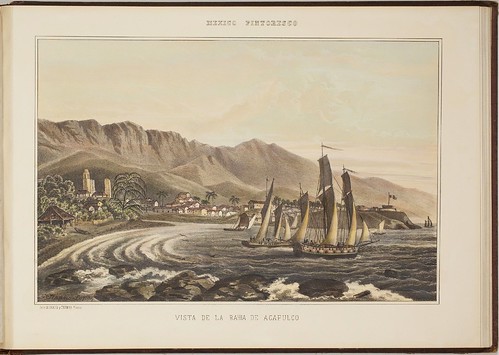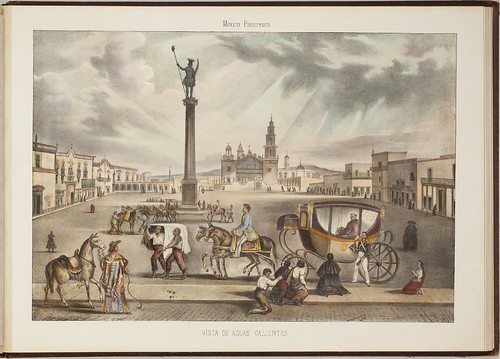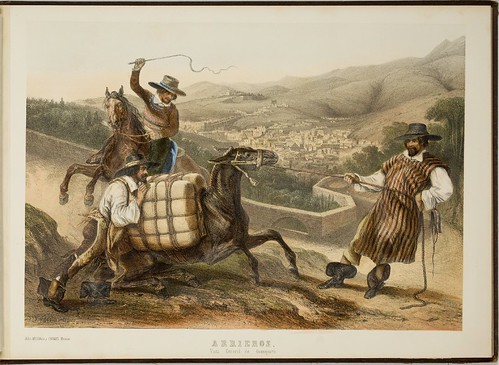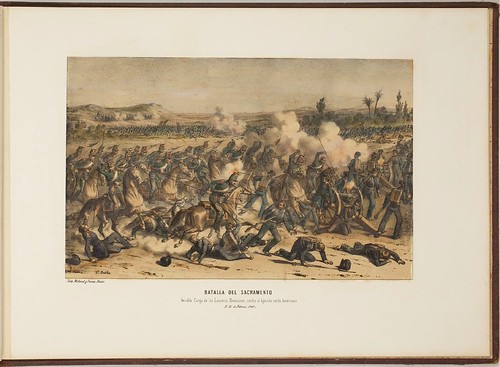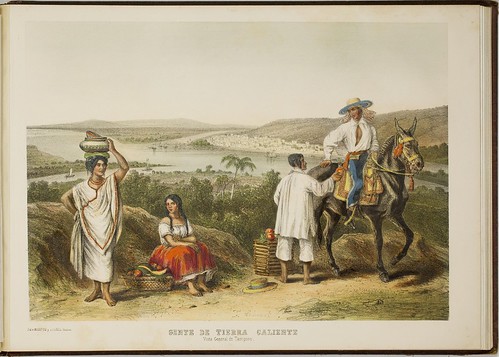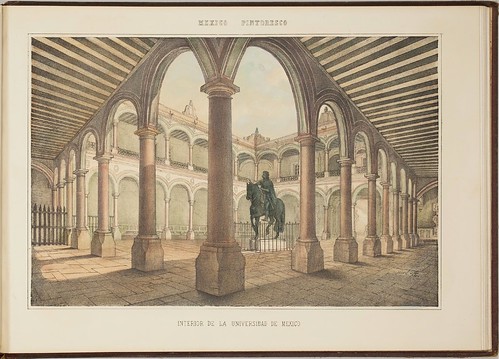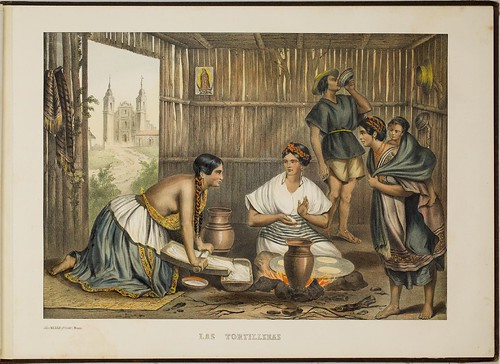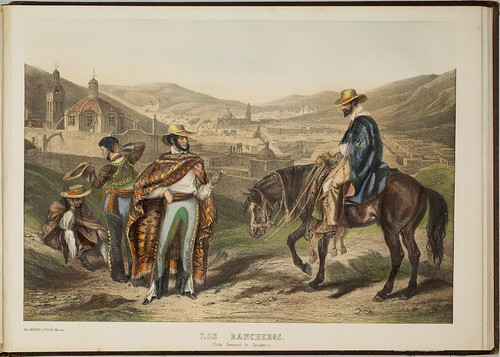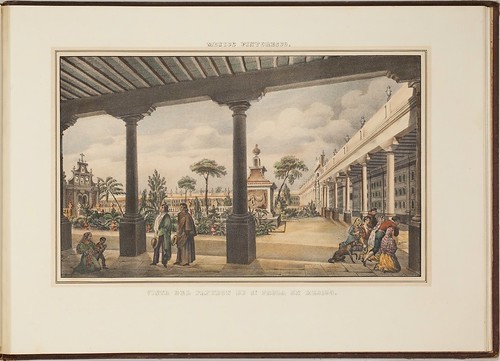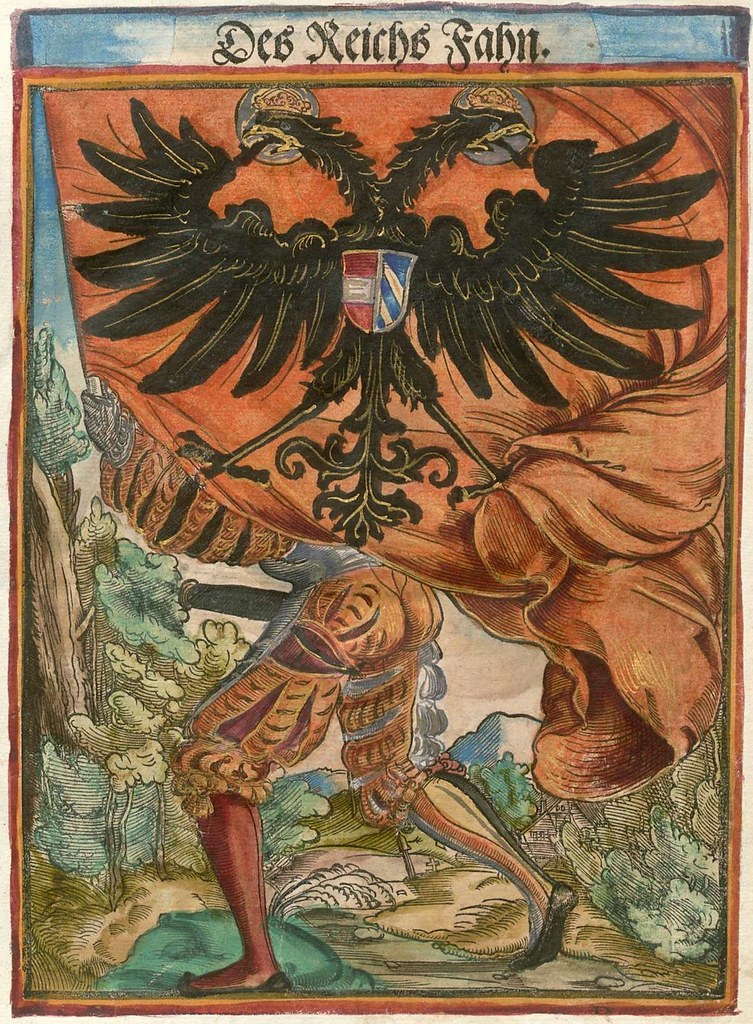
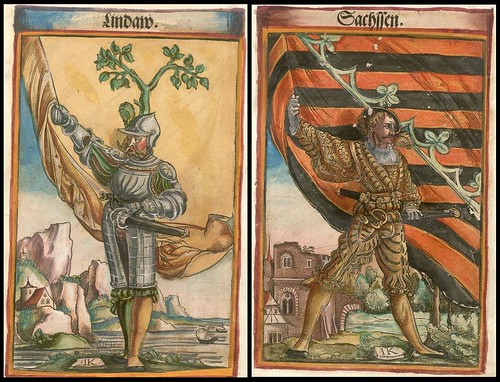
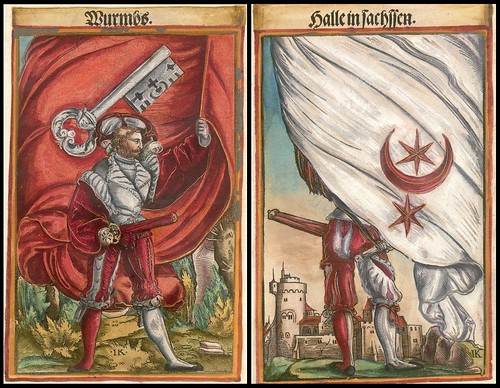
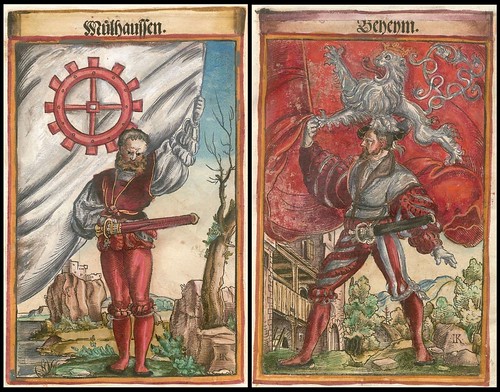
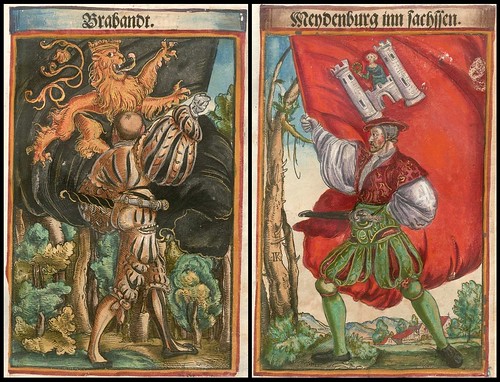

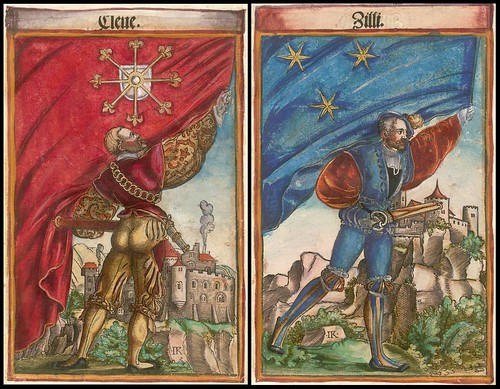

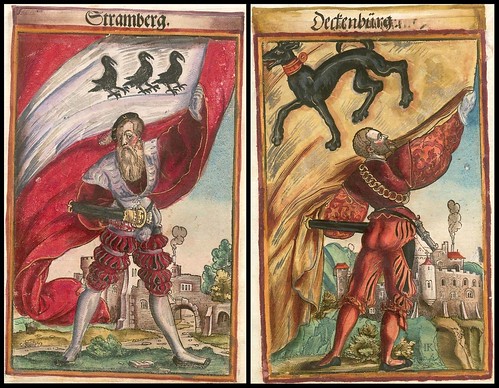
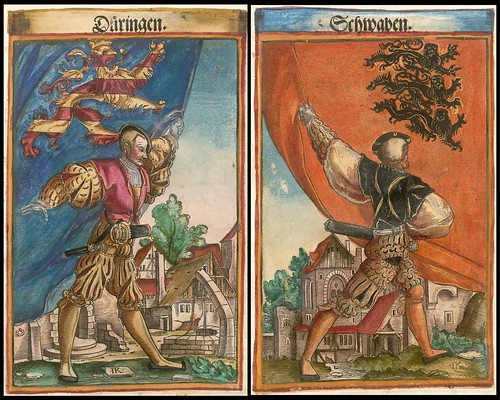

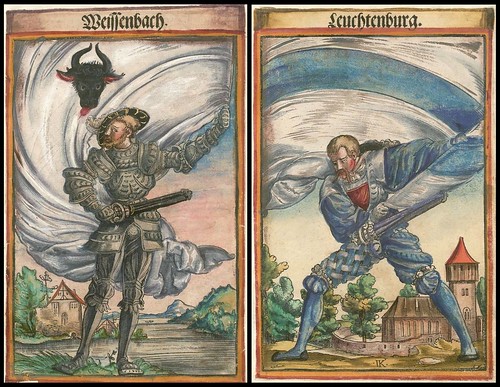
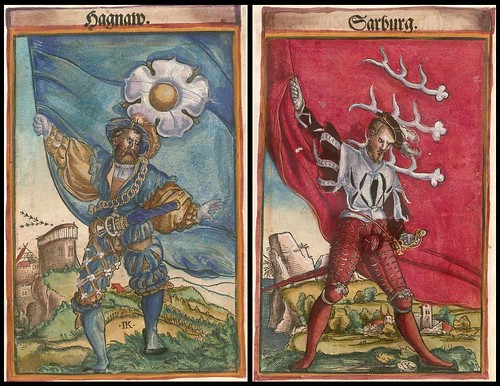
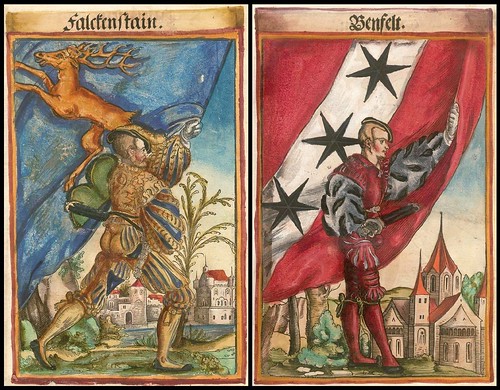
It's not often - thankfully, for all our sakes - that I get to quote myself, but an uncoloured version of this work was referenced on BibliOdyssey previously, and the information is still relevant:
Wapen. Des Heyligen Römischen Reichs Teutscher Nation' or Koebel's Wappenbuch (Coat of Arms book) is interesting because the heraldic symbols are all featured on flags -although perhaps not so obviously with the two example images- held aloft by the mercenaries known as Landsknechts (seen recently). Published in 1545 by Jacob Koebel, this rare wappenbuch features around one hundred and fifty full page illustrations (by Jacob Kallenberg - monogramme: 'IK') of the puffy shirt-wearing, armour-clad flag bearers; and in passing, I noted a subsequent edition from the late 16th century selling for ~€4000. The complete book is available online at the Bavarian State Library. [via Archivalia]
The heraldic emblem flags seen above display distinguishing elements from the coats of arms of the nobility from the German peoples of the Holy Roman Empire. The flags represent Germanic princes and barons and knights and cities and earls and electors. The publication includes blazons: descriptions employing the grammar of heraldry that will have outlined the colours to be applied by the manuscript painter(s).
The Wikipedia article on vexillology tells us that flags and the study of flags was originally (and still is, in some senses) a "sub-discipline" of heraldry.
- The images in this post were cropped and spliced together from page illustration taken from 'Wapen. Des Heyligen Römischen Reichs Teutscher Nation' (1545) from the Bavarian State Library.
- All of the book's illustrations are available (uncoloured) from Wikimedia.
- via & thanks.
